Giro Proof winter gloves review
Technical fabrics combined with a sturdy construction equals a winter glove that's fit for purpose
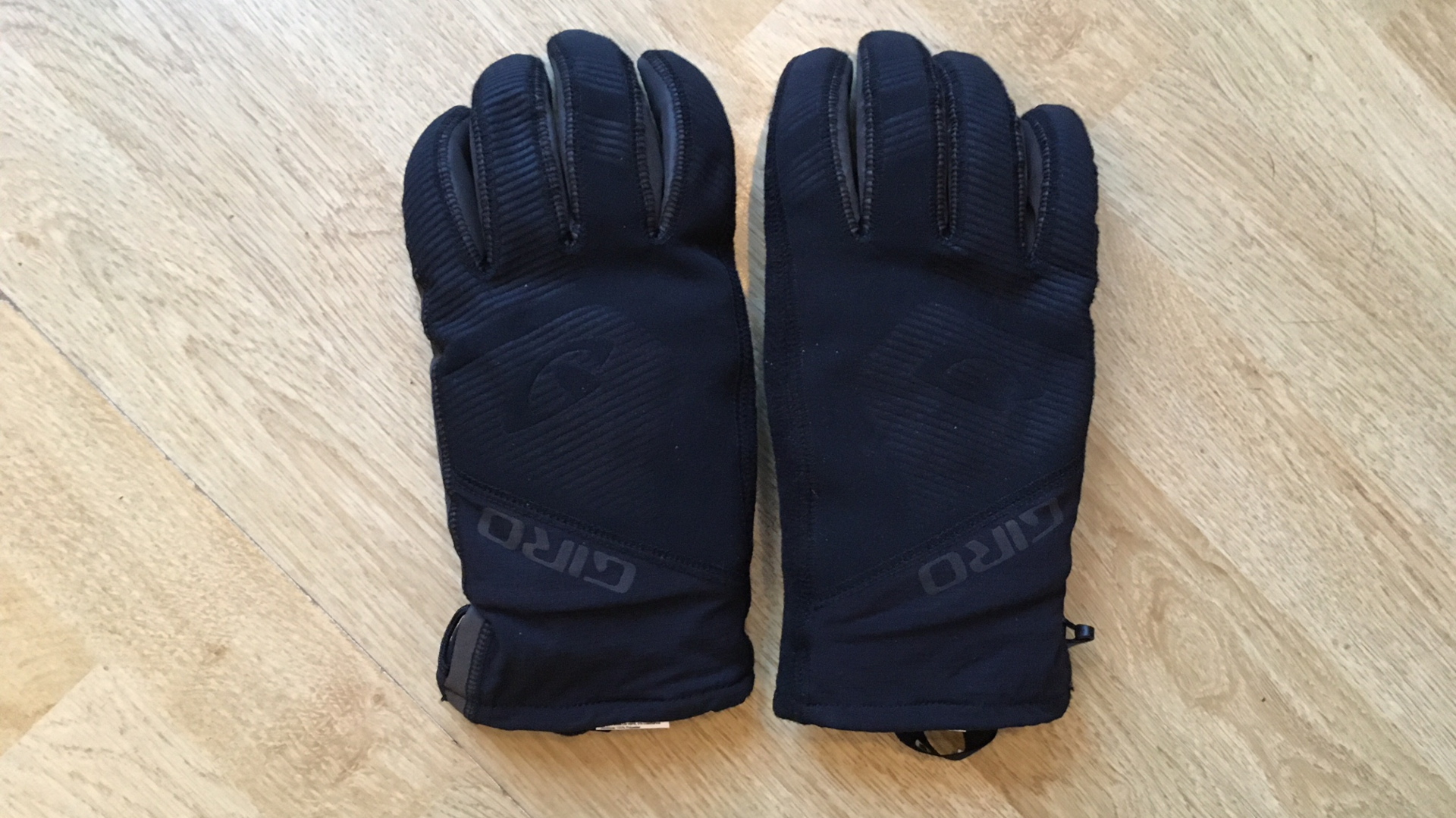
Giro’s Proof gloves are designed to thrive during the coldest winter months and for the most part they do this in style. They boast an impressive blend of high-tech fabrics, creating a glove that can deal with cold, wet and windy conditions. They may appear a little bulky for some tastes but offered far better dexterity than you might imagine for a glove that looks built for the Winter Olympics. An improved nose wipe would help elevate the gloves further still.
-
+
Impressive blend of technical fabrics
-
+
High build quality
-
+
Good level of reflective details
-
+
Uses some recycled materials
-
-
Narrow nose wipe
-
-
Tips of my fingers did get cold in sub-zero temps
You can trust Cycling Weekly.
Giro makes a wide range of cycling gloves for a variety of conditions. It positions the Proof as its “warmest five-finger winter glove” and it certainly appears built to handle the elements. With a robust construction, it has the appearance of a ski glove, using a blend of fabrics designed – like all of the best winter cycling gloves – to offer full protection against the cold and the wet.
Giro Proof winter gloves - the construction
There are winter gloves and then there are deep winter gloves – mitts designed to stop your hands turning to blocks of ice even when the temperatures dip below freezing. The Giro Proof is created to be one such glove.
Giro states that the Proof will withstand temperatures as low as -4 degree C or 25 degrees F. As cycling gloves only really need to perform in conditions fit for cycling it’s probably safe to say that any glove that can handle temperatures this low should have you covered for all your winter riding.
To create this barrier against the cold Giro has equipped the gloves with what it describes as a “double-dose” of warmth. The outer shell comprises a Polartec Power Dry insulated core and an OutDry waterproof membrane. The combination is designed to keep you dry and warm, with the Polartec fabric having the additional benefit of being made from 80% post-consumer recycled fibres.
The inner feels immediately soft and has the added benefit of having its own cuff that sits snugly against the wrist. The outer shell has the feel of a durable and water-repellent fabric and features some sensible reflective detailing that runs up and down the sides of each finger and the thumb. The adjustable outer cuff has a hook and loop Velcro fastening. The combination of the inner and outer cuff is reassuring, suggesting that it will create a sufficient barrier against the cold.
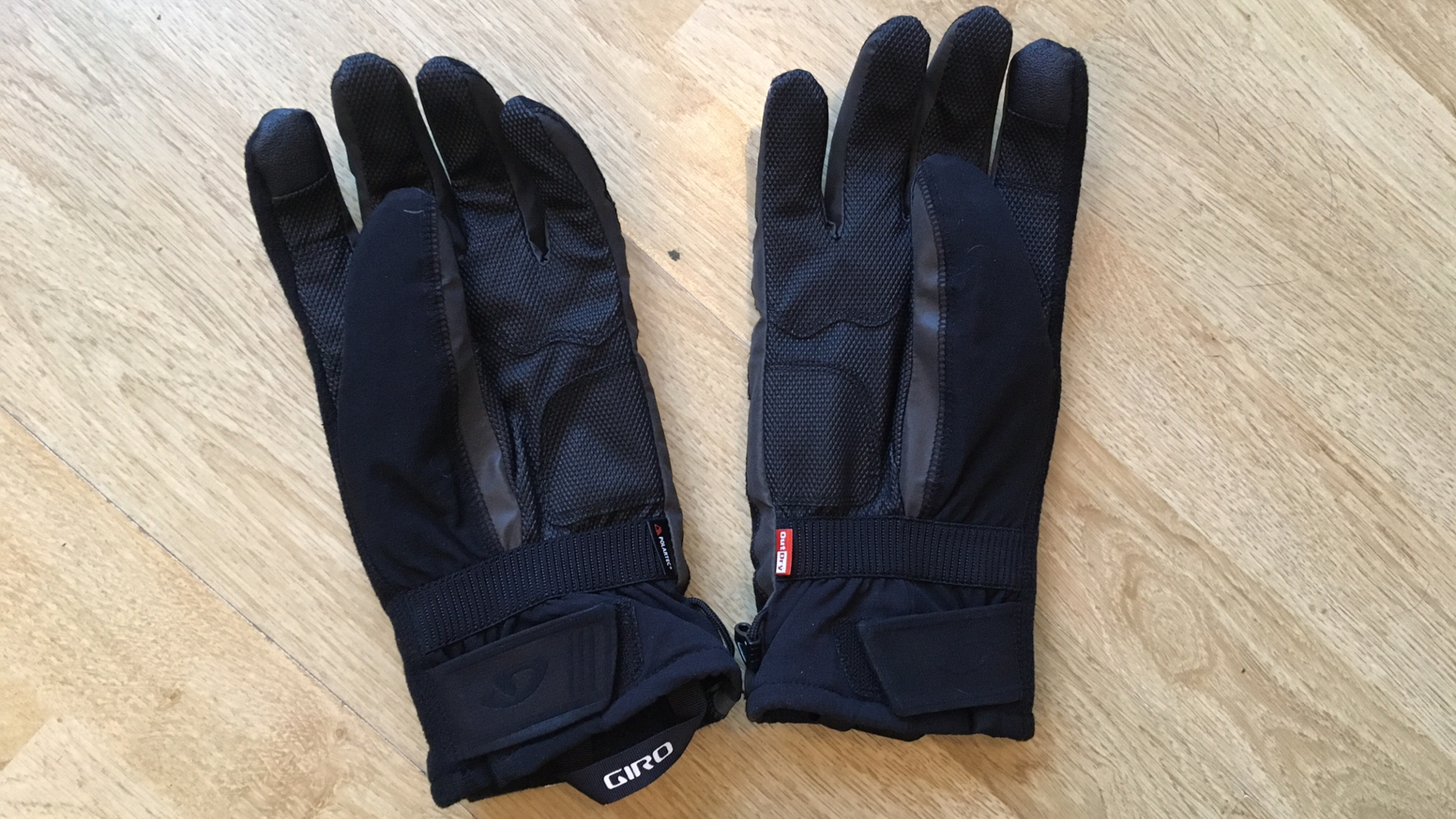
The palm is made from what Giro calls a ‘durable AX Suede Echo Diamond synthetic’. What this translates to is a textured palm that looks pretty hard wearing and appears to be fairly ‘grippy’. It doesn’t have that ‘sticky’ feel that silicone does but it looks more durable. It also features touchscreen technology on the thumb and index finger tip should you need to phone home or take a snap of the arctic conditions you’ve chosen to brave on your Sunday ride.
There’s no microfiber material on the thumb to wipe your nose on. Instead it runs up the outside of the glove up to the tip of the forefinger. It looks a little narrow to do the job properly but perhaps Giro figured that at -4 celsius your runny nose may have started to freeze over anyway.
The latest race content, interviews, features, reviews and expert buying guides, direct to your inbox!
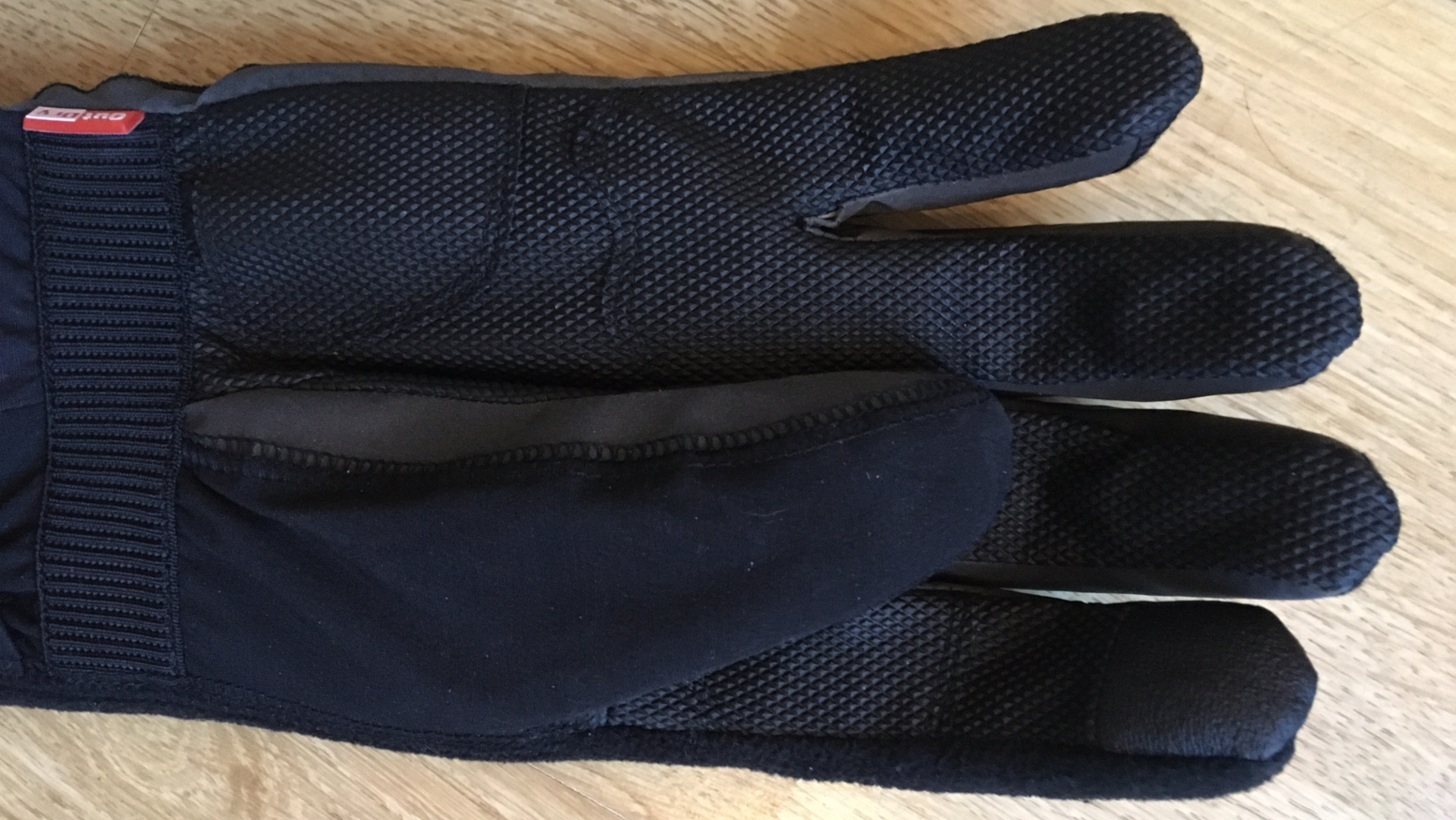
While the gloves wouldn’t look out of place on the slopes of Chamonix, they are surprisingly light, weighing in at 82g per glove for a size medium. Compare this with Castelli’s Estremo winter glove that weighs 63g per glove and it’s not a huge difference considering the choice of materials used.
They come noticeably pre-shaped too, with the fingers curved, ready to grip the bars or flick up the gears. Giro claims that the Proof delivers “exceptional dexterity” and the ease at which I can move my digits around is promising.
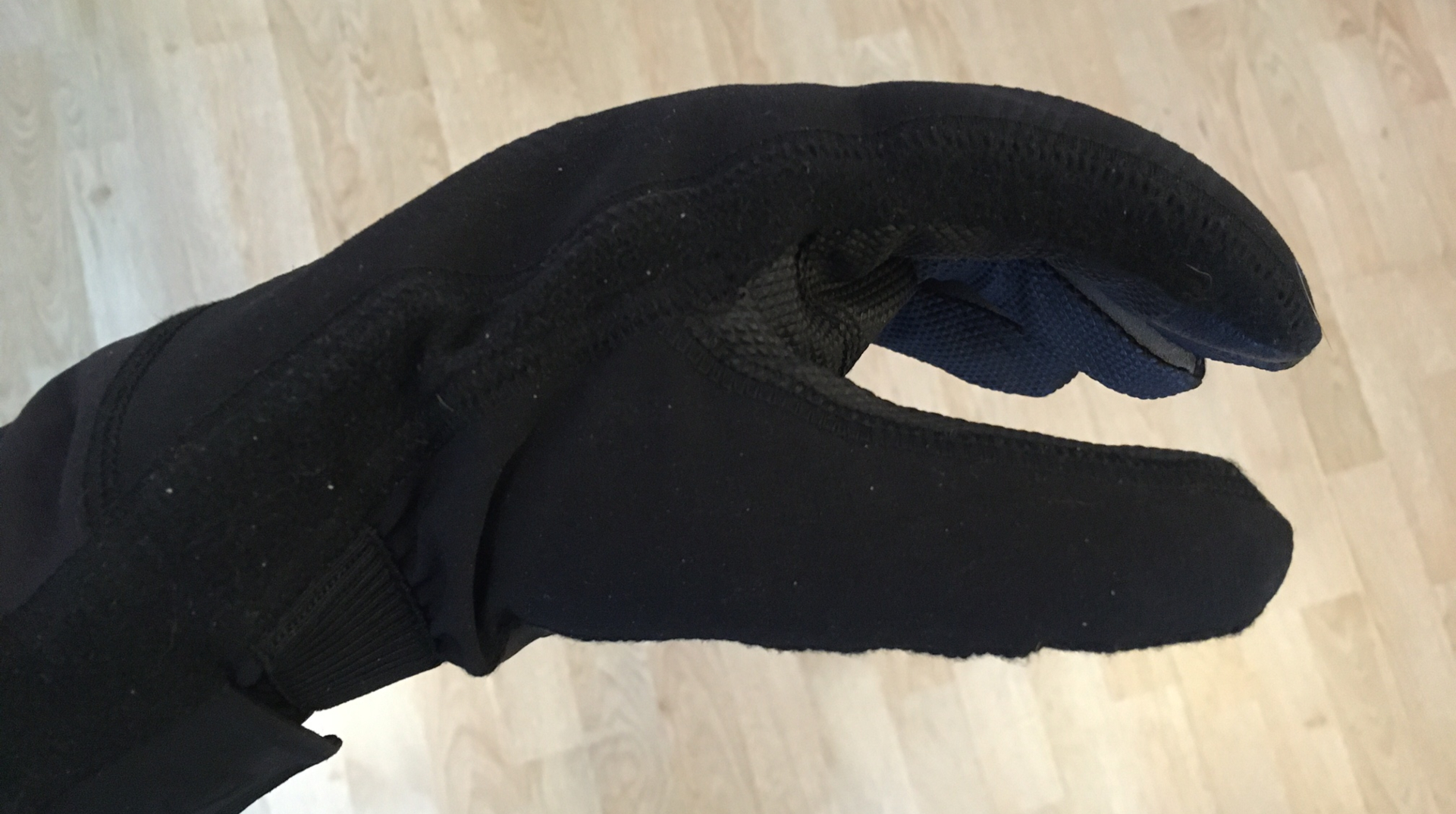
Giro Proof winter gloves - the ride
There’s much to like about the Proof gloves. They are certainly built for purpose and both the quality of fabrics and the construction is of a high quality. To create a substantial defense against really cold temperatures it’s probably inevitable that you end up with a whole lot of glove, and certainly the Proof is no streamlined lightweight. That said, Giro has done a good job of keeping the weight down so the glove never felt overly cumbersome.
What they did feel was incredibly warm from the off, with the inner cuff really lending a sense of security against drafty wrists. I had attempted to wear the Giro Proof gloves in temperatures hovering around 9 or 10 degrees celsius and quickly found my hands overheating. While this may limit their usage it did help to confirm Giro’s claim that this model was for serious winter use.
Low single digits however felt like the glove’s sweet spot. Here the insulation and the feel of the inner fleece fabric combined to keep my hands really snug. The double cuff does offer bags of protection, although I’d prefer the velcro adjustment to allow for a tighter cinch than it does
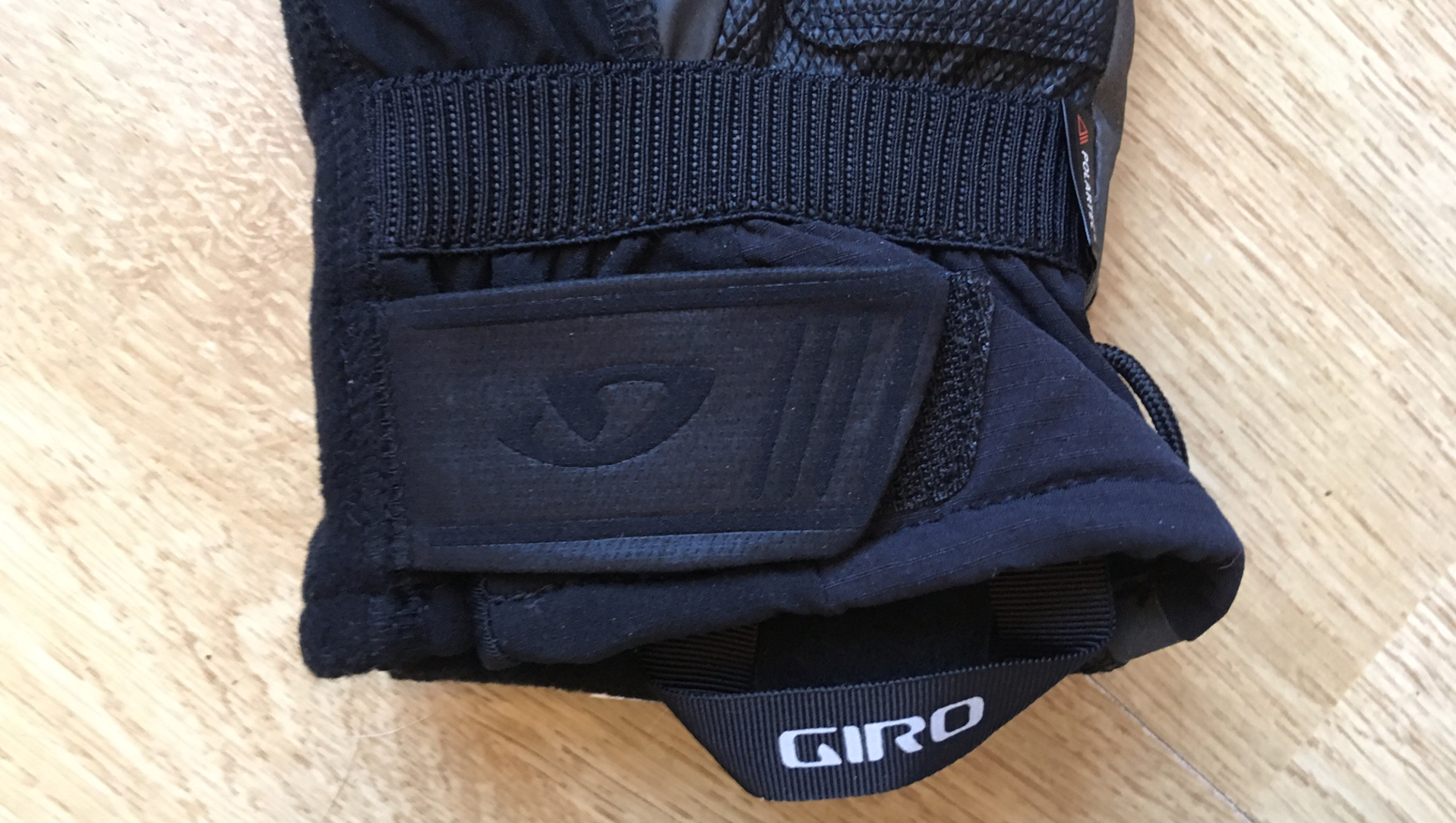
Interestingly it was when my weather apps registered below freezing that I experienced something of an issue. Both the face of the glove and the cuff kept my hands perfectly warm while my fingertips were cold. I couldn’t figure out why.
Chatting to a cyclist friend who designs clothing for the emergency services he pointed to construction of the fingertip pattern. He suggested that in an effort to allow the fingers to articulate freely the pattern narrows towards the end, forcing your fingers to compress the internal thermal fabric at the tips.
On closer examination the fingers do come to more of a ‘point’ than other winter gloves I’ve used, which seems a product of the pre-curved structure that I'd noticed during my initial appraisal of the gloves. When riding in very cold weather, with my fingers pushed towards the ends of the glove, it would seem this compression of the thermal insulation could be the reason for my chilly finger tips.
Another small gripe is the Proof’s narrow nose wipe. It’s nice and soft and runs the length of the glove but it’s far too narrow to really serve a purpose. Using the thumb, as I’m prone to do on cold rides, and you find yourself wiping your nose with fabric that’s a little rough and not absorbent.
As for the glove’s ability to keep your hands dry, the Proof excelled in both damp conditions and light but persistent rain. Not only did my hands stay dry but the palm also retained its grip. I’ve yet to wear them in heavy downpours so I can’t attest to how they cope when it gets really wet.
Other small but impactful details include the generous loop that really does help you get the gloves on and off and the full length reflective panels featured on each finger and thumb that seemingly catch the light regardless of your hand position.
Value
The Giro Proof gloves retail at £80.00 / US$85.00. Castelli’s Estremo gloves, which feature comparable material and construction and are designed to work at similarly low temperatures, are priced at £100.00 / US$99.99. Affordable winter gloves that deliver warmth in very cold conditions can prove elusive. However, dhb waterproof gloves retail at £30 / US$38 and tested well in single digit temperatures.
Verdict
In all but freezing conditions Giro’s Proof gloves lived up to its billing as the brand’s warmest five-finger glove - and even when it dropped into minus numbers it was only my finger tips that got a little cold. I did find them a bit bulky for my liking but this is reflective of my preference rather than an inherent issue. It’s also important to add that they feel much lighter than they look, with an ease of movement that belies their chunky appearance. Overall, this is a really solid winter glove made from a considered blend of high quality fabrics.
Specs
- Weight: 82g actual (per glove - medium)
- Sizes: XS-XXL
- Colours: Black
- Contact: giro.co.uk
Luke Friend has worked as a writer, editor and copywriter for over twenty five years. Across books, magazines and websites, he's covered a broad range of topics for a range of clients including Major League Baseball, Golf Digest, the National Trust and the NHS. He has an MA in Professional Writing from Falmouth University and is a qualified bicycle mechanic. He has been a cycling enthusiast from an early age, partly due to watching the Tour de France on TV. He's a keen follower of bike racing to this day as well as a regular road and gravel rider.